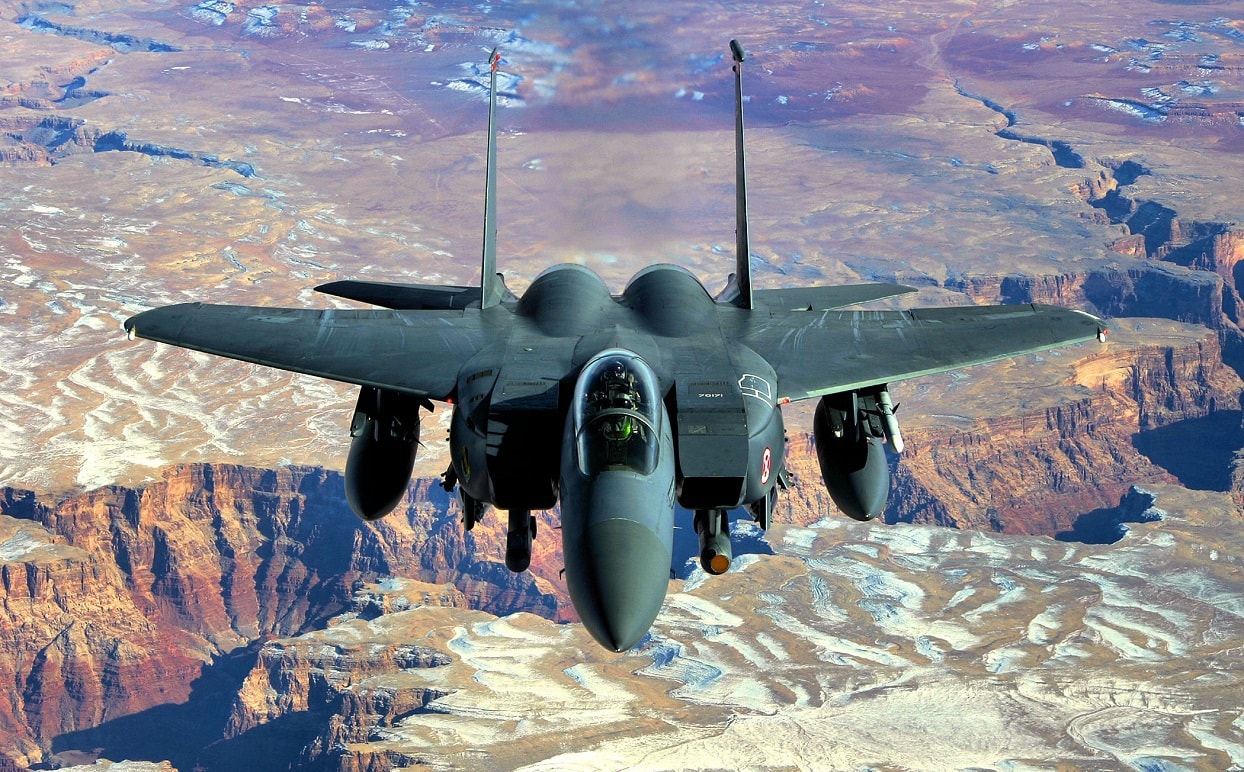Earlier this week, U.S. fighter jets wrapped up a major training event in Europe that had the feel of real-world operations because of the tensions with Russia in Ukraine and the Black Sea.
During exercise Castle Forge 21 U.S. F-15E Strike Eagle fighter jets deployed to Greece and joined the Hellenic Air Force for a month, conducting a large number of training events with all branches of the Greek armed forces and other European militaries.
Castle Forge 21
From mid-October to mid-November, F-15E Strike Eagle jets deployed to Europe and took part in exercise Castle Forge 21. The month-long training event was divided into phases.
During the first phase, the F-15Es trained with the Hellenic Air Force, Army, and Navy. The American aircraft conducted simulated dogfights, composite attack and defense air operations, ground and maritime support, close air support, and precision strike operations in the air domain.
“When it comes to proving the inherent agility of our force and reaffirming the solid partnerships we have with NATO allies in the Black Sea region, Castle Forge was a huge success,” General Jeff Harrigian, commander of U.S. Air Forces in Europe-Air Forces Africa, said in a press release.
“Castle Forge is about testing and proving critical concepts for our teams and their readiness. By leveraging the flexibility of our forces and the rapid integration of allied assets, we all achieve a competitive edge in the Black Sea region,” Gen. Harrigian added.
During the second phase of Castle Forge 21, the F-15Es flew to Bulgaria and Romania and worked with the local air forces, even conducting operations in the Black Sea, which recently has been a contested place between NATO and Russian forces.
“There is no question that our NATO allies provide the backbone of our ability to operate anywhere, anytime, and with any platform necessary to guarantee security and stability in the region. Besides being incredibly proud of what our entire team has accomplished during Castle Forge, I am confident the conditions have been set for even stronger cooperation in the future,” Gen. Harrigian added.
F-15Es came from the 336th Fighter Squadron, 4th Fighter Wing, out of Seymour Johnson Air Force Base, North Carolina.
Agile Combat Employment
During the second half of Castle Forge 21, the U.S. aircraft and crews got to test a fairly new concept that the Air Force has been experimenting with. This concept is called Agile Combat Employment (ACE) and it aims to quickly deploy aircraft and maintainers in forward-deployed airfields to deal with threats.
The main premise behind the Agile Combat Employment concept is that during a near-peer war with adversaries such as China and Russia, U.S. aircraft would be a target in their airbases. So, it would be ideal to be able to quickly disperse forces in smaller established or impromptu airfields closer to the frontlines, thereby increasing their lethality and survivability.
1945’s New Defense and National Security Columnist, Stavros Atlamazoglou is a defense journalist specializing in special operations, a Hellenic Army veteran (national service with the 575th Marine Battalion and Army HQ), and a Johns Hopkins University graduate.

